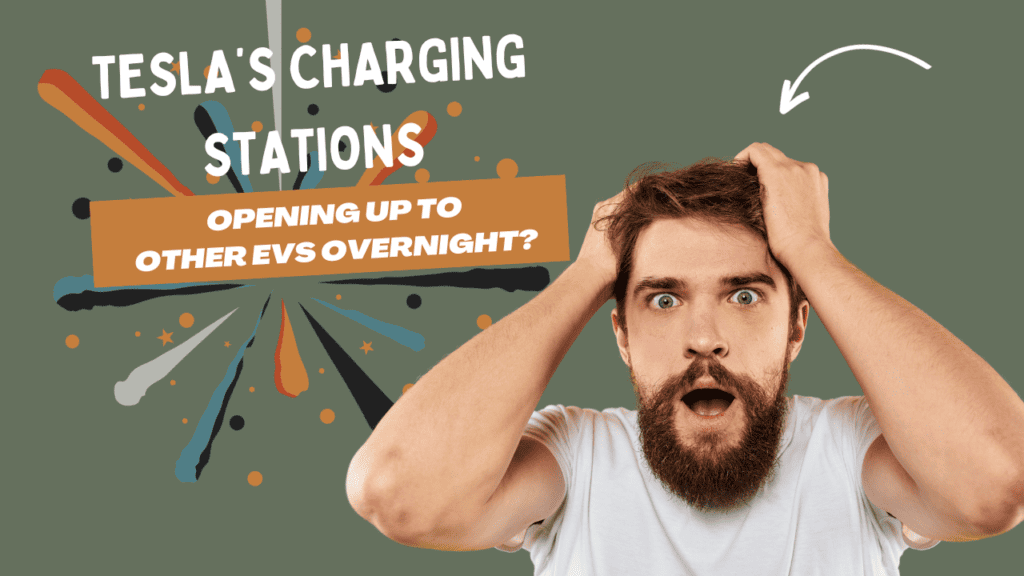
In the rapidly evolving world of electric vehicles (EVs), Tesla’s charging infrastructure has always stood out as a benchmark for streamlined convenience. On September 16, at the Earthling Meet-Up, EV enthusiast and salvager Phil Sadow, of Maxwell Vehicles, shed light on an intriguing development in the Tesla ecosystem: CCS (Combined Charging System) compatibility.
In this article, we’ll explore the discussions that took place at the Earthling Meet-Up, shedding light on the prospects of Tesla’s CCS integration. We’ll dive into the challenges it presents and the potential solutions, including the critical question of whether Tesla will open its Superchargers to all CCS-ready EVs and how it plans to address congestion and billing concerns. Additionally, we’ll touch on the fascinating rumors surrounding the Tesla Cybertruck’s charging capabilities, offering a glimpse of the future of EVs.
Tesla’s Charging Network: Streamlined, Dependable, and User-Friendly
Tesla’s charging infrastructure has achieved legendary status due to its ease of use, reliability, and overall convenience. The process is as straightforward as it gets: you arrive at a Tesla Supercharger station, plug in your electric vehicle, and watch as it seamlessly recharges its energy – all without any hassle or headaches.
However, beneath this convenience lies an exciting development that has been happening quietly. Tesla has been discreetly equipping its Superchargers with additional hardware, enabling them to communicate using the widely adopted Combined Charging Standard (CCS), a favored choice among most other EV manufacturers. Already, a dozen or more automakers have pledged to fully support a new Tesla charging standard, called NACS, that allows non-Teslas to charge at NACS-compliant Superchargers, using an upgraded version of Tesla’s charge connector. No adapter would be needed, as the new chargers would “speak” CCS.
When contemplating the transition to full-scale CCS compatibility at Tesla Supercharger stations, some believe that an overnight change may be unrealistic. Let’s consider this scenario: envision a 2025 Chevy Bolt, pulling into a Supercharger station with NACS charging, featuring the Tesla Magic Dock connector and positioning itself diagonally across two charging stalls, drawing 55 kW of power for an extended hour. This situation, especially during peak holiday weekends, could potentially lead to a line of impatient Tesla owners eagerly awaiting their turn.
In light of the current network demand, there’s a perspective that gradual implementation is the wiser choice. This strategy ensures a smoother and more efficient charging experience for all EV users, striking a balance between the convenience of CCS compatibility and maintaining optimal network performance to enhance user satisfaction.
Charging Chaos or Gradual Expansion?
Here’s the catch: if Tesla were to open its Superchargers to all CCS-ready EVs overnight, we could potentially witness some congestion and confusion at these stations.
To maintain order, Tesla might introduce V4 Superchargers with CCS support gradually. These new chargers would have a distinct appearance, and only compatible vehicles would be given the green light.
Addressing Challenges and Ensuring Smooth Operations
In the effort to offer Tesla Supercharger station access to all non-Tesla EVs, Tesla faces a significant challenge that revolves around dealing with congestion, billing, and connectivity concerns.
Congestion Worries:
Allowing all non-Tesla EVs to use Tesla Superchargers immediately and without restrictions could lead to crowded stations and billing complications. Imagine a situation where an EV occupies two charging spots because of a short charging cable or a queue of EVs impatiently waiting their turn.
To maintain order, Tesla might introduce V4 Superchargers with CCS support gradually. These new chargers would have a distinct appearance, and only compatible vehicles would be given the green light.
Connectivity Challenges:
Tesla places a strong emphasis on connectivity within its vehicles. However, when thinking about the possibility of Tesla Superchargers losing connectivity, manufacturers may struggle to align their systems with Tesla’s. Phil mentioned that this may involve creating strong backend billing connections, which include complex elements like databases and APIs, which may not always be perfectly reliable. In the event of system downtime, the risk of charging interruptions exists unless there’s a fail-safe plan in place.
However, amidst these challenges, Tesla’s commitment to simplifying the EV charging landscape shines through. The automated billing system, linked to individual Tesla accounts, eliminates the need for cash or credit cards at Supercharger stations, ensuring a streamlined and hassle-free charging process.
What Lies Ahead?
Tesla’s venture into CCS compatibility is undoubtedly a step in the right direction, but it won’t happen overnight. We’ll be navigating a landscape with a mix of charging standards and networks for some time.
The topic of the Cybertruck briefly came up at the Earthling Meet-Up. There are rumors about possible high-voltage charging, raising questions about compatibility with existing Superchargers. It may lead to the need for distinct charging stations for various Tesla models.
Charging Forward
As we anticipate the future of Tesla Supercharging for non-Tesla EVs, we can’t help but reflect on Phil Sadow’s passion for innovation in the EV world. Just as Phil breathed new life into salvaged Teslas, Tesla’s evolving approach to CCS compatibility signals a transformative era for electric vehicle charging. As we embrace this change, we’re reminded that the spirit of innovation, championed by individuals like Phil Sadow, continues to propel the EV industry forward. So, whether you’re a Tesla owner or not, you’re part of a movement that’s shaping the future of sustainable mobility.
Sources: Tesla
Images: Earthling Automotive
Author: RANDI BENTIA
